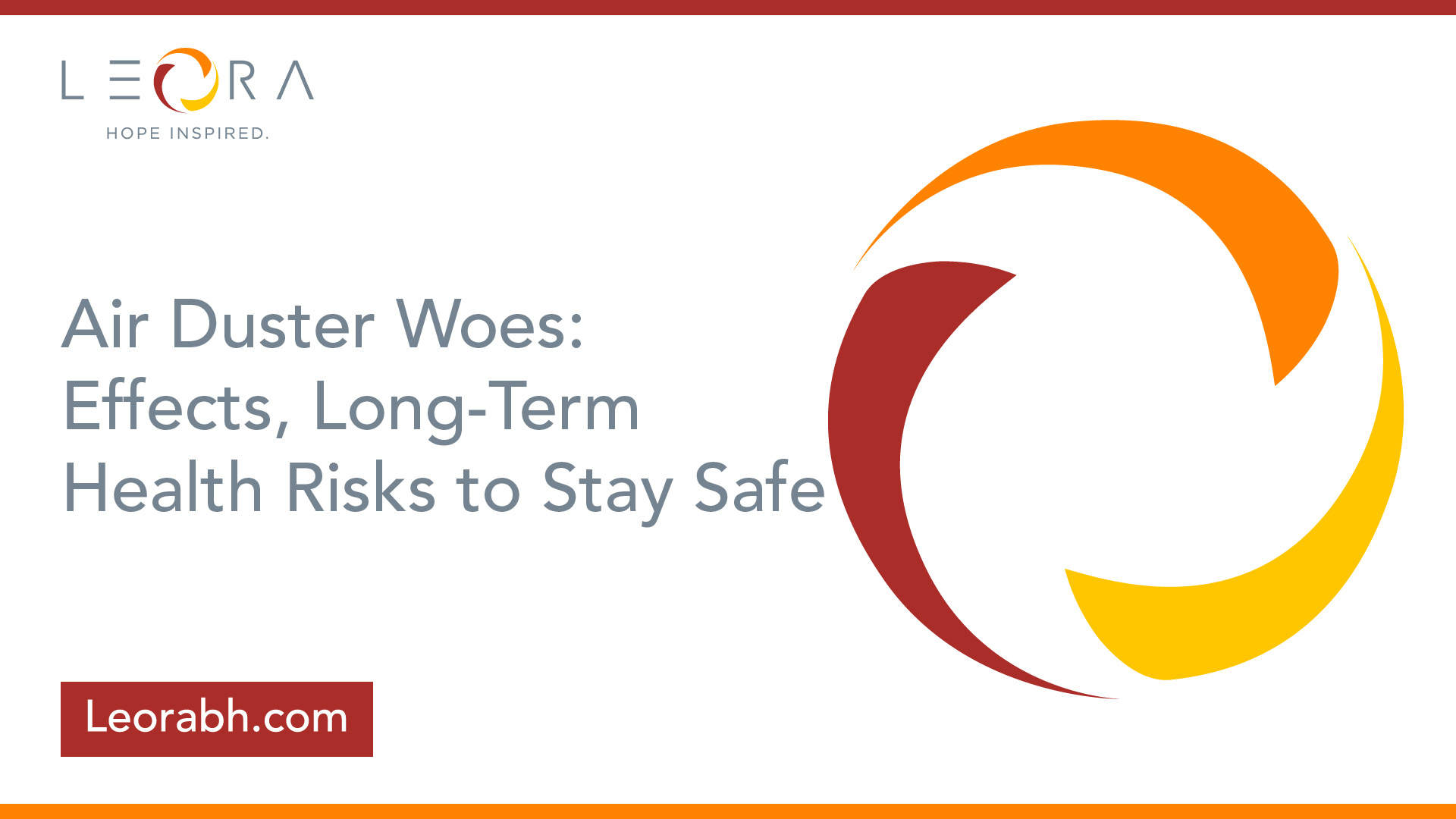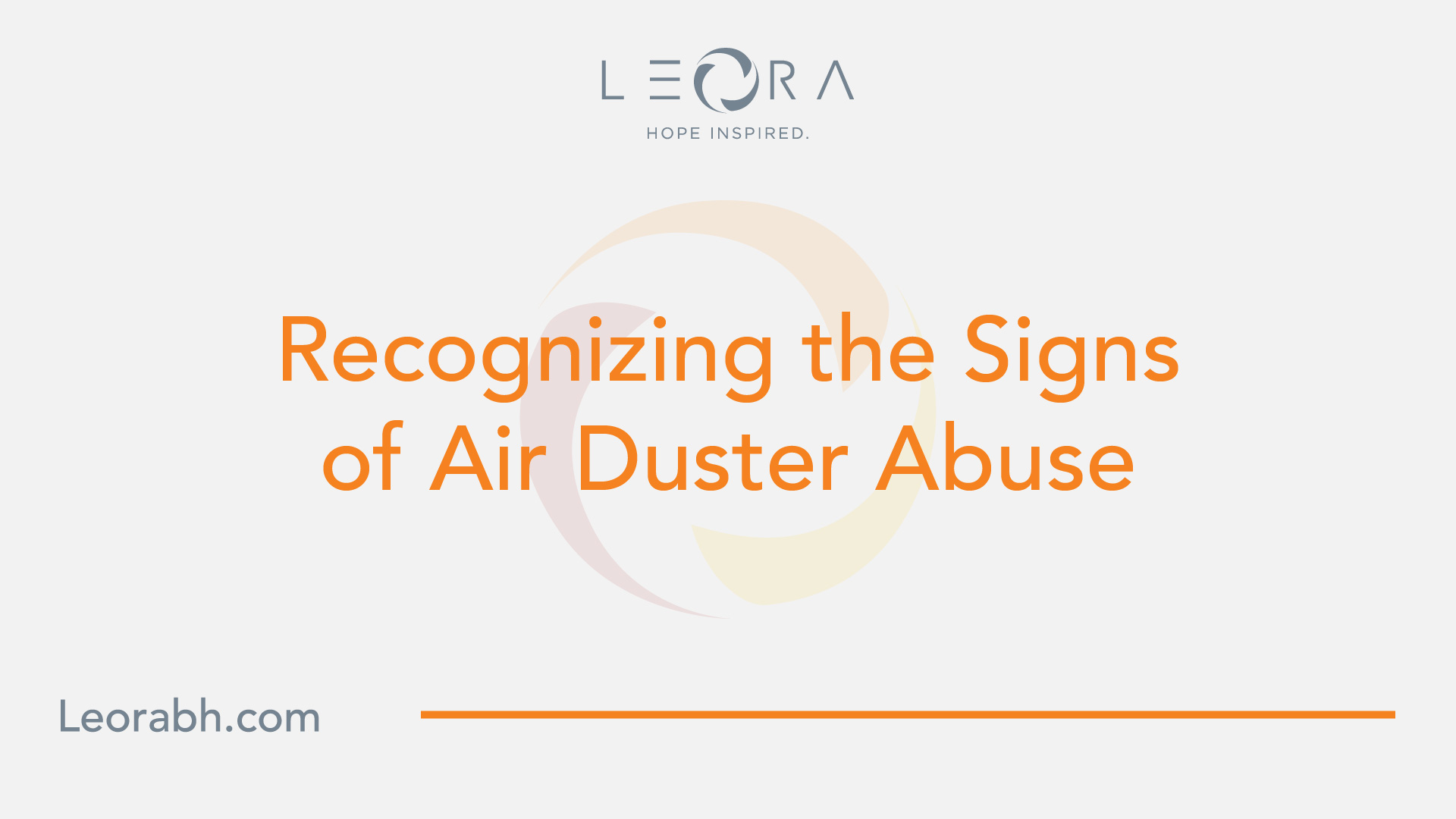Air Duster Woes: Effects, Long-Term Health Risks to Stay Safe
Unmask the detrimental effects of inhaling air dusters. Discover the immediate and long-term health risks to stay safe.
The Dangers of Air Duster Inhalation
Air dusters, commonly used for cleaning electronic devices and keyboards, can pose serious risks when inhaled. It's important to understand the potential dangers associated with the misuse of air dusters.

What is an Air Duster?
An air duster, also known as compressed air or canned air, is a common household item that can be found in most homes or offices. This product contains various gases or liquids under pressure which makes it an effective tool for cleaning hard-to-reach areas.
Air dusters are primarily used for blowing dust and debris from delicate equipment like keyboards, cameras, and other electronics. The cans come equipped with a nozzle which makes it easy to apply and control where the air is directed.
It is important to use air dusters in a well-ventilated area due to the chemicals and gases that are released when the can is used. It is also important to use it properly, as misuse can cause damage to the equipment or harm to the user.
Understanding the Inhalants in Air Dusters
Air dusters contain inhalants that are harmful when inhaled. The primary inhalant found in these products is difluoroethane, a gas that is highly volatile and can have detrimental effects on the body.

Immediate Effects of Inhalation
Inhaling air duster fumes can lead to immediate and dangerous effects on the body. The high concentration of difluoroethane can cause a rapid cooling effect on the skin and mucous membranes. This sudden drop in temperature can result in frostbite-like injuries.
Moreover, the inhalation of difluoroethane can lead to a state of intoxication, similar to alcohol or drug intoxication. The immediate effects of air duster inhalation may include:
Immediate Effects
- Euphoria
- Dizziness
- Nausea
- Slurred speech
- Confusion
- Loss of coordination
It's crucial to remember that these immediate effects can impair judgment and coordination, increasing the risk of accidents and injuries.
Understanding the dangers associated with air duster inhalation is essential for promoting safety and well-being. In the following sections, we will explore the short-term and long-term health consequences, recognizing the signs of air duster abuse, and providing guidance on safe handling and disposal of air dusters.
Short-Term Health Consequences
Inhaling air dusters can have immediate and detrimental effects on the body. The short-term health consequences of air duster abuse primarily affect the neurological, respiratory, and cardiovascular systems.
Neurological Effects
The chemicals present in air dusters can have a profound impact on the central nervous system. When inhaled, these substances rapidly reach the brain, causing various neurological effects. These effects can include:
- Dizziness
- Confusion
- Slurred speech
- Impaired coordination and motor skills
- Memory loss
- Headaches
- Seizures
It's important to note that the neurological effects can vary depending on the specific chemicals present in the air duster formulation.
Respiratory Issues
Inhaling air dusters can lead to significant respiratory problems. The chemicals found in these products can irritate and damage the delicate tissues of the respiratory system. Common respiratory issues associated with air duster abuse include:
- Coughing
- Shortness of breath
- Wheezing
- Chest pain
- Bronchospasms
- Pulmonary edema (fluid accumulation in the lungs)
Repeated exposure to the chemicals in air dusters can exacerbate respiratory problems and increase the risk of developing chronic respiratory conditions.
Cardiovascular Complications
Air duster abuse can also have adverse effects on the cardiovascular system. The chemicals inhaled from air dusters can cause immediate cardiovascular complications, such as:
- Increased heart rate
- Irregular heart rhythm
- Elevated blood pressure
- Cardiac arrest
- Heart failure
These cardiovascular complications can be life-threatening and require immediate medical attention.
To better understand the short-term health consequences of air duster abuse, it's important to consider the specific chemicals used in air dusters. Inhalants commonly found in these products include difluoroethane, tetrafluoroethane, and 1,1-difluoroethane. The concentration and combination of these chemicals can vary among different brands and formulations.
It is critical to prioritize the safety and well-being of individuals by raising awareness about the dangers of air duster abuse and promoting healthier alternatives. Seeking help and support from medical professionals and substance abuse resources is crucial in addressing the short-term and long-term health risks associated with inhaling air dusters.

Long-Term Health Risks
Organ Damage
Prolonged inhalation of air duster can lead to severe long-term health consequences. One of the major risks associated with this behavior is organ damage. The chemicals present in air dusters can have detrimental effects on various organs in the body, including the brain, heart, liver, and kidneys.
The specific chemicals found in air dusters, such as difluoroethane or tetrafluoroethane, can cause damage to the central nervous system, leading to impaired brain function, memory loss, and difficulties with concentration. These chemicals can also negatively impact the cardiovascular system, potentially resulting in heart rhythm abnormalities and increased risk of heart attacks or strokes.
Moreover, the liver and kidneys can be affected by the toxic substances in air dusters. Prolonged inhalation can lead to liver damage, including inflammation, fatty liver disease, or even liver failure. The kidneys can also suffer from the toxic effects, potentially resulting in impaired kidney function and increased risk of kidney disease.
Cognitive Impairment
In addition to organ damage, long-term inhalation of air duster can have serious consequences on one's cognitive abilities. The chemicals present in these inhalants can disrupt the normal functioning of the brain, leading to cognitive deficits and intellectual decline.
Individuals who abuse air dusters may experience difficulties with memory, attention, and problem-solving skills. They may also exhibit poor judgment and impaired decision-making abilities. These cognitive impairments can have a profound impact on daily life, affecting work or school performance, relationships, and overall quality of life.
Air duster abuse is a serious matter that can have devastating effects on one's health and well-being. It is important to seek help if you or someone you know is struggling with addiction.
Addiction and Dependency
Air duster abuse can also lead to addiction and dependence. The chemicals found in these inhalants can have psychoactive effects, producing a sense of euphoria and relaxation. With repeated use, individuals may develop a psychological and physical dependence on the inhalant.
Addiction to air dusters can have devastating consequences, including social isolation, financial problems, and deteriorating physical and mental health. Withdrawal symptoms, such as anxiety, irritability, and cravings, may occur when attempting to quit or reduce usage, making it challenging to break free from the cycle of addiction.
It is crucial to recognize the potential long-term health risks associated with air duster abuse. Seeking professional help and support is essential for individuals struggling with addiction and the adverse effects of inhalant abuse. Remember, there are safer alternatives available for cleaning purposes, and it is important to prioritize your health and well-being.
Recognizing the Signs of Air Duster Abuse
Air duster abuse can have serious consequences on an individual's physical and mental well-being. Recognizing the signs of air duster abuse is crucial in order to intervene and seek appropriate help and support. The signs can be categorized into behavioral and psychological symptoms, as well as physical signs and symptoms.
Behavioral and Psychological Symptoms
Air duster abuse can lead to various behavioral and psychological symptoms, indicating a potential problem. These symptoms may include:
- Sudden changes in mood or behavior
- Irritability and agitation
- Poor decision-making and impaired judgment
- Increased secrecy and isolation
- Neglecting responsibilities and neglecting personal hygiene
- Loss of interest in previously enjoyed activities
- Persistent cravings for air duster inhalation
- Difficulty concentrating and impaired cognitive function
It's important to note that these symptoms may vary from person to person, and the severity of the symptoms can depend on the frequency and duration of air duster abuse.
Physical Signs and Symptoms
In addition to behavioral and psychological symptoms, there are also physical signs and symptoms that may indicate air duster abuse. These physical manifestations can include:
Physical Signs and Symptoms
- Frequent headaches
- Dizziness and lightheadedness
- Nausea and vomiting
- Nosebleeds
- Red or watery eyes
- Difficulty breathing
- Chest pain or discomfort
- Tremors or uncontrollable shaking
- Muscle weakness
Experiencing any of these physical symptoms, especially in conjunction with behavioral and psychological symptoms, should raise concerns about potential air duster abuse.
Seeking Help and Support
If you suspect that someone is abusing air dusters or if you are struggling with air duster abuse yourself, it is important to seek help and support. This can be a challenging journey, but there are resources available to assist you. Consider the following steps:
- Talk to a healthcare professional: Reach out to a doctor or mental health professional who can provide guidance, assessment, and treatment options.
- Involve trusted individuals: Share your concerns with family members, friends, or a support network. They can offer emotional support and help connect you with appropriate resources.
- Substance abuse helplines: Utilize helplines dedicated to substance abuse and addiction. These confidential helplines can provide information, resources, and support.
- Support groups: Joining support groups or attending counseling sessions can provide a sense of community and understanding, allowing you to learn from others who have faced similar challenges.
- Treatment programs: Consider seeking professional treatment programs that specialize in substance abuse and addiction. These programs can provide comprehensive care and support throughout the recovery process.
Remember, seeking help is a courageous step towards recovery. With the right support and resources, it is possible to overcome air duster abuse and regain control of your life.
Safely Handling and Disposing of Air Dusters
To ensure the safety of both individuals and the environment, it is crucial to handle and dispose of air dusters properly. By following the recommended guidelines, you can minimize the risks associated with these products.
Proper Storage and Usage
When it comes to storing and using air dusters, it is important to keep the following guidelines in mind:
- Store air dusters in a cool, dry place, away from direct sunlight and sources of heat.
- Keep air dusters out of reach of children and pets.
- Follow the instructions provided by the manufacturer for proper usage.
- Use air dusters in a well-ventilated area to minimize inhalation exposure.
- Avoid using air dusters near open flames or hot surfaces.
By adhering to these guidelines, you can reduce the likelihood of accidents or misuse, promoting a safer environment.
Disposal Guidelines
Proper disposal of air dusters is essential to prevent harm to individuals and the environment. Here are some important guidelines to follow:
- Do not puncture or incinerate air duster cans.
- Check with your local waste management authorities for specific instructions on how to dispose of air dusters.
- Some jurisdictions classify air dusters as hazardous waste due to their potentially harmful contents. If this is the case in your area, you may need to take them to designated collection sites or schedule a hazardous waste pickup.
- If air dusters are not classified as hazardous waste, they can often be disposed of with other household trash. However, it is advisable to empty the can completely before disposing of it.
By following the appropriate disposal guidelines, you can contribute to a safer and cleaner environment.
Safer Alternatives to Air Dusters
As the dangers of inhaling air dusters become more evident, it is important to explore safer alternatives for cleaning and dusting. Consider the following options:
AlternativeDescription
Here are some options for cleaning electronic devices:
- Compressed Air Canisters: These canisters use compressed air to blow away dust and debris. They are designed specifically for cleaning electronic devices and do not contain harmful inhalants.
- Microfiber Cloths: These soft and reusable cloths effectively attract and trap dust, offering a safe and environmentally friendly option for dusting surfaces.
- Electric Dusters: These dusters use a motorized fan to produce a gentle stream of air for cleaning purposes. They do not rely on harmful inhalants and can be a more sustainable choice in the long run.
By opting for safer alternatives to air dusters, you can still achieve effective cleaning and dusting results while minimizing the associated risks.
By understanding how to handle, store, and dispose of air dusters properly, as well as exploring safer alternatives, you can take proactive steps to protect your well-being and the environment.
Conclusion
Air duster abuse is a serious and potentially life-threatening behavior that can have significant short-term and long-term health consequences. The chemicals present in air dusters can cause organ damage, cognitive impairment, addiction, and dependency. It is important to recognize the signs of air duster abuse and seek help and support from medical professionals or substance abuse resources.
By prioritizing safety and well-being, individuals can take proactive steps to protect themselves and others from the dangers of air duster abuse. Proper handling, storage, usage, and disposal of air dusters are essential in promoting a safer environment. Exploring safer alternatives for cleaning and dusting can also reduce the risks associated with inhalant abuse.
Remember, seeking help is a courageous step towards recovery. With the right support and resources, it is possible to overcome air duster abuse and regain control of your life.
Sources
Everything You Need To Know About Air Duster Abuse
Air Duster High: Dangerous Side Effects of Huffing Air Dusters
Find Your Inner Light
Related Articles
Contact Us
Leora Behavioral Health offers a comprehensive addiction treatment programs to help you get your life back on track.
Our trained professionals will work with you to develop a personalized treatment plan that meets your unique needs. If you or someone you know is struggling with addiction, reach out to Leora Behavioral Health today.


.svg)





.svg)
.svg)
.svg)
.svg)